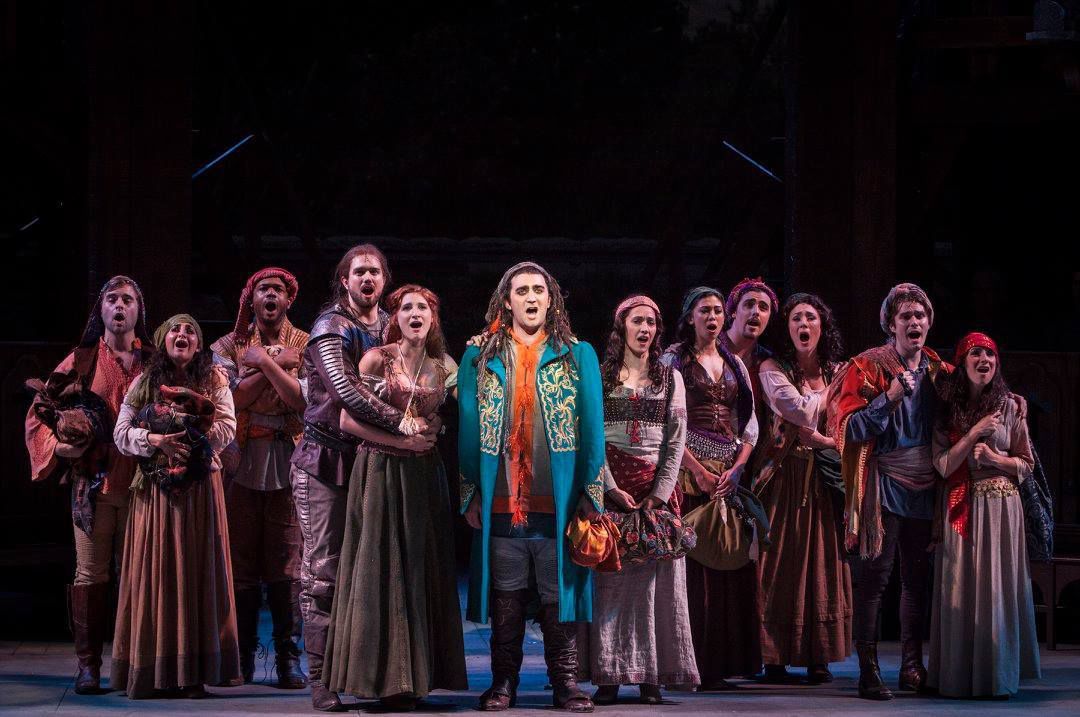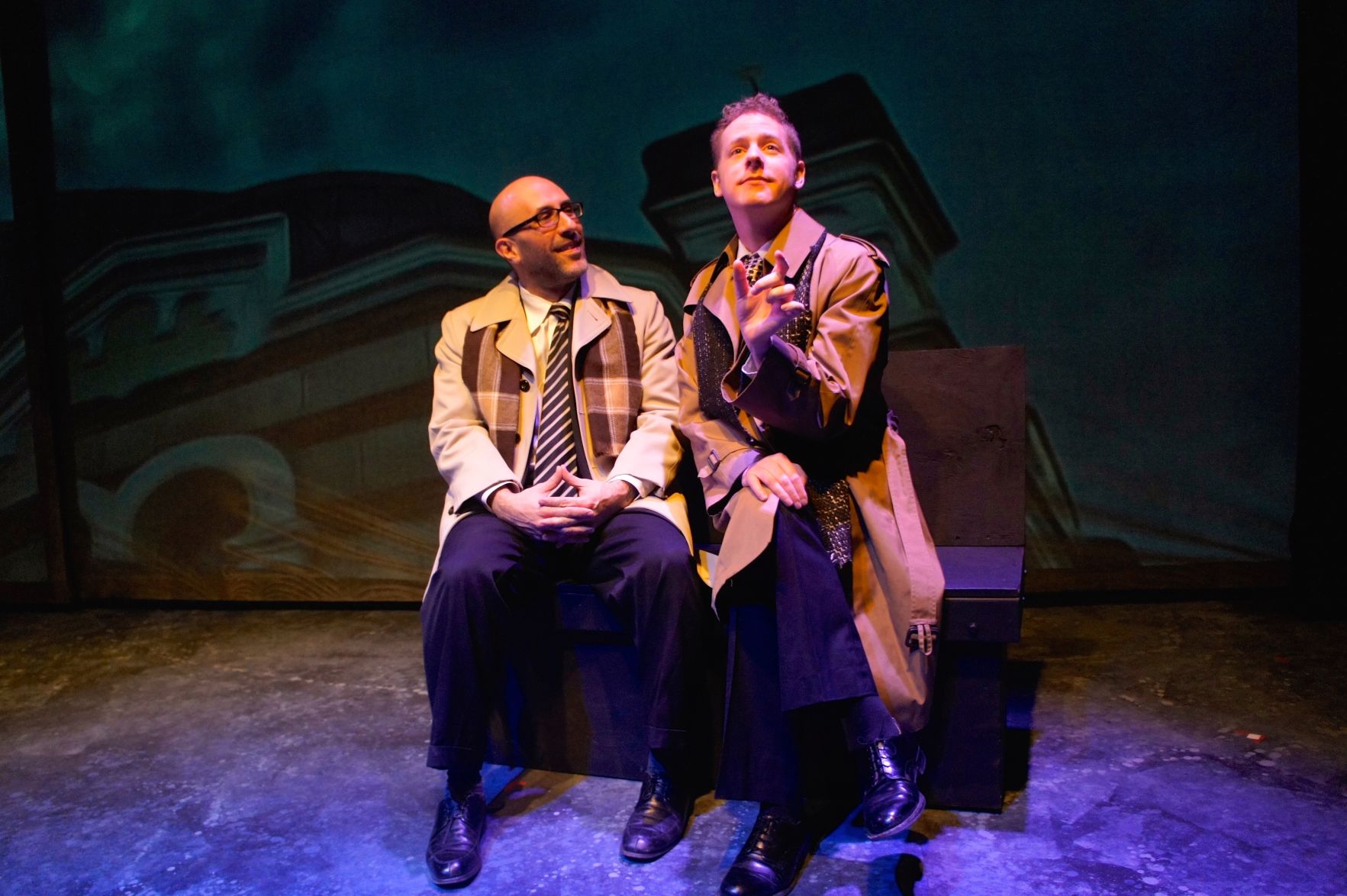Great Lakes’ ‘Hamlet’ worth seeing twice
By Bob Abelman
God hath given you one face, and you make yourself another. ~”Hamlet,” Act III, Scene I
By featuring male and female twins in two of his comedies, “The Comedy of Errors” and “Twelfth Night,” Shakespeare capitalized on the humor that comes from mistaken identity and misdirection and the provocation found in issues grounded in gender roles and social politics.
By double-casting the title character in “Hamlet” with a male (Jonathan Dyrud) and a female (Laura Welsh Berg) actor in alternating performances, the only thing Great Lakes Theater director Charlie Fee meant to capitalize on was his deep and diverse talent pool of performers.

Laura Welsh Berg as Hamlet. Photo / Roger Mastroianni
Women have appeared in Shakespeare’s plays since 1660, once Charles II officially granted permission to do so for two theater companies in London. And women have been earning critical acclaim for their portrayal of Hamlet since 1775, when the young Sarah Siddons toured the British provinces in the Prince of Denmark’s codpiece and fine hosiery.
Though this be madness, yet there is method in’t, for casting Hamlet in the feminine allows the character to weep more unabashedly over the death of his father, reveal more emotion while plotting the revenge he seeks by killing his murderous uncle, and more boldly bare his vulnerabilities to the audience in splendidly penned soliloquies.
And such casting forces audiences to look at and listen to this classic play more closely and from a different vantage point, which may reveal a new understanding of the historic text as well as contemporary attitudes toward gender.
All this happens in the Great Lakes Theater production but, for Fee, the play’s the thing and his only concern about having a male and a female Hamlet is how well they manage to play him.
Still, there no getting around the fact that a female answering to “son,” “prince” and “my lord” is a distraction. But so are the many other realities this art form requires us to ignore when watching a play.
We are not, for instance, in Denmark and this is not the Elizabethan age. That is not actually Claudius (David Anthony Smith), Polonius (Dougfred Miller), or the ghost of the King (Lynn Robert Berg) we see before us. Many performers are called on to play two characters and no one on stage speaks in iambic pentameter when off it.
If we are able to suspend disbelief in these pretenses, than we can surely do the same regarding a female Hamlet and Fee makes this particularly easy to do by offering a production steeped in the simple staging traditions of Shakespeare’s Globe Playhouse.
There’s seating areas onstage and surrounding the thrust playing area, rich period costuming by Kim Krumm Sorenson, single-source lighting designed by Rick Martin to dramatically isolate the actors while keeping the surrounding area in darkness, and a majestic two-tier wood structure absent of scenery to enclose the action, designed by Russell Metheny. Subtle underscoring provided by Matthew Webb reinforces the emotion in key scenes, including Queen Gertrude’s (Laura Perrotta) announcement of Ophelia’s (Erin Partin) drowning and Hamlet’s final scene where he answers his earlier question “to be or not to be.”
All this allows us to keep our focus where it belongs: on the words, on the truly brilliant performances turned in by every member of the ensemble, and on the sweet prince who struts and frets his or her three hours upon the Hanna Theatre stage.
As Hamlet on opening night, Dyrud speaks his lines as if they had just come to mind and fully embraces the terrible melancholy, the feigned madness and the dark introspection they reflect. His brooding makes you listen closely, watch without blinking and marvel at the intensity he manifests. All this has his fellow actors responding in kind, resulting in a production that brims with passion and precision.
Berg brings ferocity to the role. Her Hamlet is more rebellious, wears his anger on his sleeve and offers words that are boldly expressed. Her interpretation of Hamlet’s distemper is overtly theatrical, which is particularly apparent when crossing swords with Laertes (Nick Steen). Although the fight choreography is identical between productions, its execution is much more lavish in Berg’s hands. Whereas Dyrud’s craft is concealed, Berg’s is unabashedly on display.
Early in the play, Hamlet remarks that “There is nothing either good or bad, but thinking makes it so.” This applies to the two portrayals of Hamlet, which are marvelous in their own right and do the work justice. Preferring one over the other is simply a matter of personal preference – mine leans toward Dyrud – but neither should be missed. cv
On Stage
WHAT: “Hamlet”
WHERE: The Hanna Theatre, 14th St. and Euclid Ave., Cleveland
WHEN: Through April 15
TICKETS & INFO: $13 – $75, call 216-241-6000 or visit to greatlakestheater.org
Bob Abelman covers professional theater and cultural arts for the Cleveland Jewish News. Follow Bob at Facebook.com/BobAbelman.3.
Originally published in the Cleveland Jewish News on April 4, 2017.
Lead image: Jonathan Dyrud as Hamlet. Photo / Roger Mastroianni











